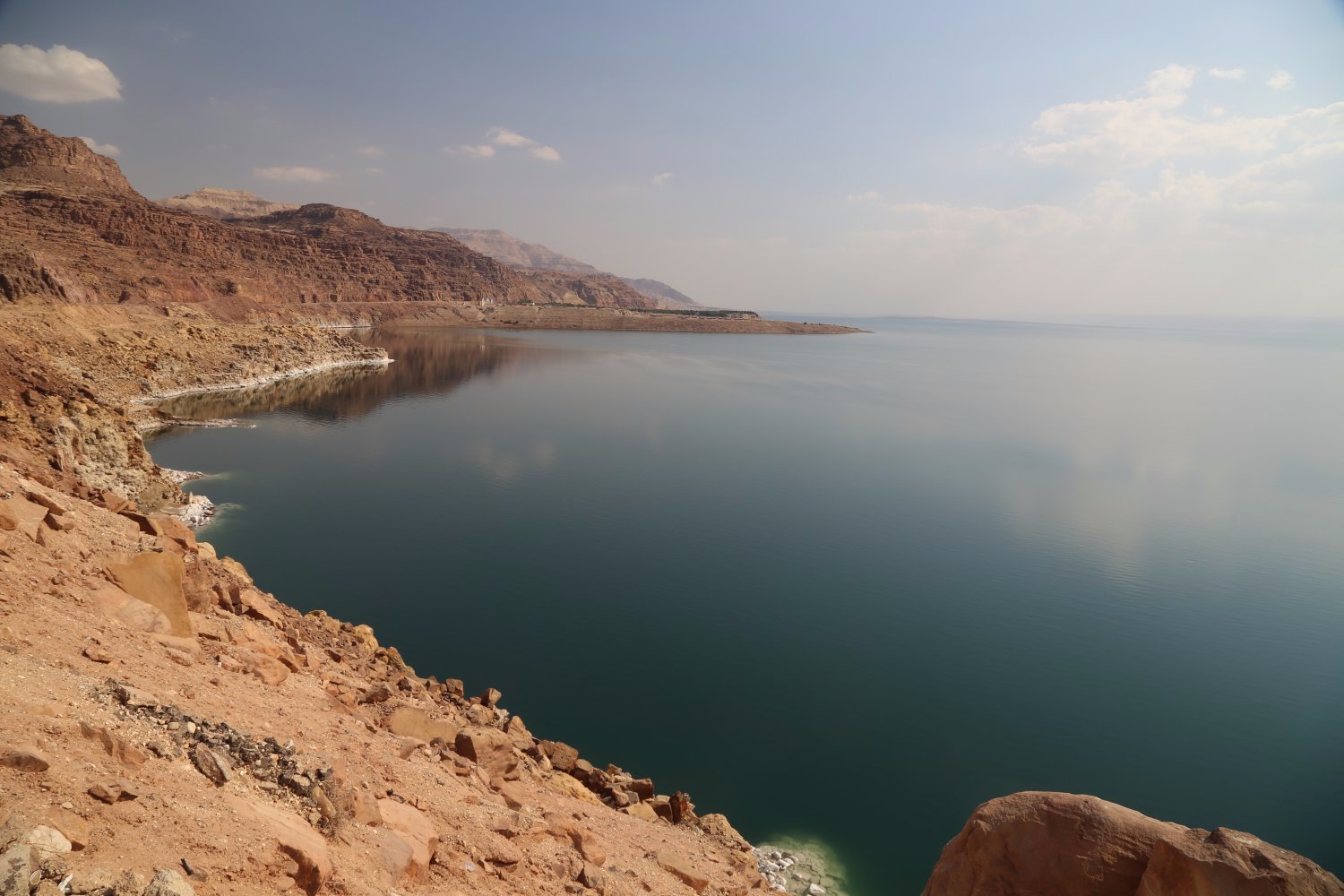Ever swum in water so salty you could float without trying? The Dead Sea is nearly ten times saltier than the ocean, and its extreme salinity—around 30%—makes it one of the most unique places on Earth. But there’s more to this mysterious body of water than just salt.
Despite its name, the Dead Sea is full of life in other ways. It’s the deepest hypersaline lake in the world, plunging to 1,237 feet (377 meters), and it’s been around for nearly 3 million years. Beneath the surface lies a rich history and fascinating science—from mineral-rich mud with therapeutic powers to its role in preserving the famous Dead Sea Scrolls.
This isn’t just a salty lake—it’s a natural wonder that continues to intrigue both scientists and curious travelers from around the world.
The Geological Marvel: Understanding the Dead Sea’s Formation
The Dead Sea lies within an extraordinary geological structure called the Dead Sea Transform (DST)—a massive fault system stretching about 621 miles (1,000 km) from Turkey down to the Red Sea Rift. This transform boundary marks the separation between the African tectonic plate to the west and the Arabian plate to the east. Unlike typical lakes, the Dead Sea sits in a large pull-apart basin that began forming around 15 million years ago as these giant plates began sliding past each other.
What makes this geological formation truly remarkable are its size and depth. The basin extends nearly 93 miles (150 km) in length and around 5 to 6 miles (8 to 10 km) in width. Geophysical surveys have uncovered a strong negative gravity anomaly, indicating that the basin holds an incredibly thick sediment layer—over 3 miles (5 km) deep in many parts and reaching at least 6 miles (10 km) in some areas.
The formation of the Dead Sea basin reflects fascinating chapters of Earth’s geological history. During the Jurassic and Cretaceous periods (about 201 to 66 million years ago), the entire region was covered by an extended version of the Mediterranean Sea. Over time, as the Arabian Plate collided with the Eurasian Plate, the seabed was uplifted, causing fractures that allowed the land to sink and form what is now the Dead Sea graben.
In the Pleistocene Epoch (2.6 million to 11,700 years ago), the water level rose to about 700 feet (310 meters) above where it is today, creating a vast inland sea that stretched some 200 miles (320 km) from north to south. Over time, streams carried sediments into the basin, depositing thick layers of shale, clay, sandstone, rock salt, and gypsum.
Notable geological features within the basin include:
- Mount Sedom—a dramatic salt dome on the southwestern shore, formed by ancient salt layers pushing upward.
- Al-Lisān Peninsula—shaped by tectonic movement, composed of clay, marl, chalk, and gypsum.
- Sinkholes—forming along the shoreline as the water level drops, allowing groundwater to dissolve underground salt layers.
The Dead Sea’s evolution also includes previous bodies of water—most notably Lake Lisan (about 70,000 to 12,000 years ago), which reached levels 328 to 820 feet (100 to 250 meters) higher than today’s Dead Sea. As the region’s climate grew more arid, Lake Lisan gradually shrank and became increasingly saline, leaving the Dead Sea as its last remnant.
Chemical Composition: Beyond Just Salt
The Dead Sea is famous for how salty it is, but it’s not just regular salt that makes it special. While typical ocean water is made up of about 85% sodium chloride (table salt), the Dead Sea has only 30.4% sodium chloride. Instead, it contains a huge amount—50.8%—of magnesium chloride, giving it an entirely different mineral makeup compared to any other body of water on Earth.
Tests indicate that the Dead Sea’s overall salinity is around 31.5%, which makes it about ten times saltier than regular seawater. Because of this, the water is very dense—about 10.35 pounds per gallon (1.24 kg per liter)—which is why people float so easily in it.
Besides magnesium and sodium, the Dead Sea is packed with other minerals. It contains 4.4% potassium chloride, 14.4% calcium chloride, and has the highest concentration of bromide ions found anywhere in the world. In total, there are 26 important minerals in the water, and 12 of them are found only in the Dead Sea.
Here’s the list of main minerals found in the Dead Sea and their benefits on the skin and overall well-being:
| Mineral | Description |
| Magnesium chloride | Supports skin hydration and soothes inflammation. |
| Sodium chloride | Common table salt helps cleanse and detoxify the skin.
|
| Calcium chloride | Strengthens bones and supports cell regeneration.
|
| Potassium chloride | Helps maintain skin moisture and balances electrolytes.
|
| Bromides | Mainly magnesium and sodium bromide; relaxes muscles and calms the nervous system. |
| Sulfates | Aid in detoxification and skin purification. |
| Bicarbonates | Help balance pH levels and soften the skin. |
| Zinc | Supports healing and protects the skin from damage. |
| Iron | Vital for oxygen transport and overall cell function. |
| Lithium | Has mood-stabilizing effects and may benefit certain skin conditions. |
| Strontium | Known for its anti-inflammatory properties. |
| Iodine | Important for thyroid function and metabolic balance. |
Before 1979, the Dead Sea had two separate water layers with different temperatures and salt levels. The upper layer (about 115 feet (35 meters) deep) had around 30% salinity and temperatures between 66–99 °F (19–37 °C), while the lower layer stayed at 72 °F (22 °C) and had more than 34% salinity. This lower layer was so full of sodium chloride that salt began forming crystals on the sea floor.
Scientists found that this salt layer grows by about 10 cm every year, thanks to a process called double-diffusive convection. In simple terms, warmer, salty water slowly sinks, cools down, and causes salt to crystallize as it goes deeper.
The Dead Sea’s minerals aren’t just unique—they’re also good for your health. Magnesium helps hydrate skin, potassium keeps moisture balanced, calcium protects cells, and bromine reduces inflammation. Because of these benefits, the Dead Sea is also an important economic resource. Israel and Jordan together produce about 4.2 million short tons (3.8 million tons) of potash and other valuable minerals from it every year.
Tip: Would you like to visit this salty natural wonder? Israel offers much more than just the Dead Sea — it’s a land of ancient history and breathtaking natural beauty. Get inspired by 7- and 10-day itineraries that take you through the very best this fascinating country has to offer. https://www.nextleveloftravel.com/israel/7-day-and-10-day-Israel-Itinerary/
Environmental Challenges: A Shrinking Wonder
Despite its ancient resilience, the Dead Sea is now facing a serious environmental crisis. The iconic salt lake is shrinking at an alarming pace —around 3 feet (1 meter) per year, with some recent estimates reaching up to four feet annually. This rapid decline has only accelerated over time: between 1930 and 1973, the water level dropped by about 6.7 inches (17 centimeters) a year, but recent Israeli reports show it’s now falling by up to 47 inches (120 centimeters) annually.
The main cause isn’t nature—it’s us. Nearly 80% of the shrinkage is due to the diversion of the Jordan River and its tributaries. Once supplying the Dead Sea with 46 billion cubic feet (1.3 billion cubic meters) of freshwater annually, the river now brings just 3.5 billion cubic feet (100 million cubic meters), mostly in the form of agricultural runoff and wastewater.
Another major factor is mineral extraction. Companies on both the Israeli and Jordanian sides pump water from the northern basin into evaporation ponds, resulting in a net loss of more than 84 billion gallons of water every year. This industry is responsible for roughly 40% of the Dead Sea’s decline.
But the consequences go beyond just water loss. As the shoreline recedes, it leaves behind an increasingly unstable and hazardous landscape:
- Over 8,000 sinkholes have formed in the past 40 years.
- Entire beaches, roads, and farms have collapsed.
- Tourism sites have been abandoned as access to the shoreline vanishes.
In total, the Dead Sea’s water level has dropped by around 148 feet (45 meters) over the past 50 years. Experts predict that the lake will eventually stabilize at about two-thirds of its current size. Meanwhile, the exposed lakebed continues to accumulate salt, growing thicker by approximately 4 inches (10 centimeters) each year.
Solutions have been proposed—most notably, the controversial Red Sea-Dead Sea Canal, which would pump seawater from the Red Sea. But environmentalists are divided: while some believe it could help, others warn of unforeseen ecological damage. Alternative ideas include restricting industrial water use and restoring natural flow to the Jordan River.
A Natural Wonder on the Brink
The Dead Sea is one of the world’s oldest and most extraordinary natural wonders. Formed millions of years ago, it now faces a serious threat. Water diversion, industrial activity, and climate change are rapidly transforming its unique landscape.
As water levels drop, more than just the shoreline is disappearing—a rare ecosystem is at risk. The Dead Sea contains 26 essential minerals, 12 of which are found nowhere else on Earth. These minerals are not only scientifically valuable but also economically important for both Israel and Jordan.
Its future depends on timely and thoughtful action—whether through new water sources or stricter regulation. This natural treasure won’t survive without care. If we want the Dead Sea to be here for future generations, we need to act now.






Leave a Reply